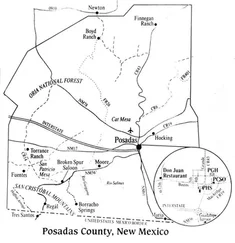Options for everybody
Simple. Profitable. Trading.
1st edition
Stefan Deutschmann
I M P R I N T Options for everybody
Simple. Profitable. Trading.
1st edition
© 2018-2019 Stefan Deutschmann.
All rights reserved.
Author: Stefan Deutschmann
E-Mail: stefan1deutschmann@gmail.com
Cover: Samantha Stückroth
E-Mail: s.stueckroth@live.de
Publishing Company: self-published
Printed version (German only): epubli – a part of neopubli GmbH, Berlin
Inhaltsverzeichnis
I M P R I N T I M P R I N T Options for everybody Simple. Profitable. Trading. 1st edition © 2018-2019 Stefan Deutschmann. All rights reserved. Author: Stefan Deutschmann E-Mail: stefan1deutschmann@gmail.com Cover: Samantha Stückroth E-Mail: s.stueckroth@live.de Publishing Company: self-published Printed version (German only): epubli – a part of neopubli GmbH, Berlin
Figures
List of abbreviations
Foreword
1. General information
1.1 A game of probabilities?!
1.2 What is an option?
1.3 Stocks vs. Options
2. Basics
2.1 Main Features of Options Contracts
2.2 Basics: Call vs. Put
2.3 Buying or selling Options?
2.4 Profit Loss (P L) Diagrams
2.5 Repitition: Understanding Call Options
2.6 Repitition: Understanding Put Options
2.7 Option Moneyness (ITM, OTM, ATM)
2.8 Extrinsic & Intrinsic Value
2.9 “The greeks”
2.10 Volatility
2.11 Probability of Profit (POP)
2.12 Standard deviation
2.13 Trading the probabilities
2.14 Bid-Ask-Spread
2.15 Volume & Open Interest
2.16 Nominal value & Buying Power
2.17 Expiration of options & Asignment
2.19 Earnings
2.21 Using correlation for diversification
2.22 Market awareness
2.23 Number of occurences
2.24 The "real" probability
2.25 “Black Swan” Events
3. Strategies
3.1 How do I choose the right strategy?
3.2 Naked Put Options
3.3 Naked Call-Options
3.4 Covered Call
3.5 Vertical Debit Spread
3.6 Long Call Vertical Spread
3.7 Long Put Vertical Spread
3.8 Vertical Credit Spread
3.9 Short Put Vertical Spread
3.10 Short Call Vertical Spread
3.11 Strangle
3.12 Iron Condor
3.13 Straddle
3.14 Iron Fly
4. The 1x1 of the trade
4.1 Opening a trade
4.2 Closing a trade
4.3 Option strategies for beginners
4.4 Which strategies do we not adjust and why?
4.5 Adjustment of loss positions
4.6 Why roll options?
4.7 Holistic consideration of adjusting
4.8 Adjusting a „naked“ Option
4.9 Adjusting Strangles and Straddles
4.10 Why you should not use Stop Loss Orders
5. Trading successfully
5.1 Repetition of the most important basics
5.2 Anxiety and control
5.3 Managing winners
5.4 What is to be considered before entering the trade?
5.5 What is the difference between strategies with and without predefined loss limits?
5.6 How does VIX help you choose the right strategy?
5.7 Procedure and execution of a trade (Option selling)
5.8 Procedure and execution of a trade (earnings trade)
5.9 Procedure and execution of a trade (trading volatility)
5.10 Procedure and execution of a trade („close your eyes and sell puts“)
5.12 Procedure and execution of a trade (Ratio-Spreads)
5.13 Daily routine
6. Cheat-Sheets
Bullish Strategies
6.1 Covered Call
6.2 Long Call Diagonal Spread
6.3 Naked Short Put
6.4 Long Call Vertical Spread
6.5 Short Put Vertical Spread
Baerish Strategies
6.6 Long Put Vertical Spread
6.7 Long Put Diagonal Spread
6.8 Naked Short Call
6.9 Short Call Vertical Spread
Neutral Strategies
6.10 Broken Wing Butterfly
6.11 Butterfly
6.12 Calender Spread
6.13 Iron Condor
6.14 Iron Fly
6.15 Jade Lizard
6.16 Straddle
6.17 Strangle
Bibliography
Figure 1: CatchMark Timber Trust Inc. (CTT), Preis in USD, vom 15.02.2019 16
Figure 2: Option chain of the SPY 28
Figure 3: Rights and obligations for buyers and sellers 41
Figure 4: P/L-Diagram (Long-Call) 47
Figure 5: P/L-Diagram (Short-Call) 49
Figure 6: P/L-Diagram (Iron Condor) 50
Figure 7: "Moneyness" #1 63
Figure 8: „Moneyness“ #2 64
Figure 9: Intrinsic & extrinsic value or „Moneyness“ 71
Figure 10: Gamma-Change during days into trade 81
Figure 11: : Gamma-Influence on your P/L during the trade 82
Figure 12: Gamma within different strategies 82
Figure 13: Gamma at different strikes 83
Figure 14: Thetadecay over time, combined with premium 88
Figure 15: Verhältnis Ratio of premium / theta decay 88
Figure 16: Vega in different strategies 91
Figure 17: Vega at different strikes and expirations 92
Figure 18: Different IV-Ranks and their interpretations 97
Figure 19: Calculating the IVR 99
Figure 20: Expected Move at IV=15 102
Figure 21: Expected Move at IV=30 102
Figure 22: VIX "Contango" 105
Figure 23: VIX "Backwardation" 106
Figure 24: Graphical representation of the 1st and 2nd standard deviation in the SPY with an IVR of 11 117
Figure 25: Probability of Profit Strangles; 1. vs. 2. standard deviation 119
Figure 26: Strangles; 1. vs. 2. standard deviation (simulation with 1 million USD account size, of which 25% was actively used for trades). 75% were held in cash. 119
Figure 27: Strangles, 1st vs. 2nd standard deviation, graphical 120
Figure 28: P/L-Diagram Short-Put 123
Figure 29: P/L-Diagram Short-Call 124
Figure 30: P/L-Diagram Strangle 125
Figure 31: P/L-Diagram at 10 DTE 127
Figure 32: P/L-Diagram at 45 DTE 128
Figure 33: P/L-Diagram Long-Put 130
Figure 34: P/L-Diagram Long Call 131
Figure 35: Example for narrow spreads, good volume and good open interest in the SPY 139
Figure 36: Example for the required Buying-Power of a Strangles in Canopy (CGC) 150
Figure 37: A healthy "middle course" through diversification 166
Figure 38: Historical vs. implied volatility 182
Figure 39: Sorting of shares according to IVR 184
Figure 40: P/L-Diagram Long-Put 189
Figure 41: P/L-Diagram Naked-Short-Put 192
Figure 42: P/L-Diagram Long-Call 196
Figure 43: P/L-Diagram Naked Short Call 199
Figure 44: P/L-Diagram Vertical Credit Spread (Put) 216
Figure 45: P/L-Diagram Vertical Credit Spread (Call) 218
Figure 46: P/L-Diagram Strangle 225
Figure 47: P/L-Diagram Iron Condor (same width of the Spreads) 228
Figure 48: P/L-Diagram Straddle 232
Figure 49: P/L-Diagram Iron Fly 236
Figure 50: P/L-Diagram Iron Fly (Example) 238
Figure 51: Take-Profit (before rolling) 272
Figure 52: Take-Profit (after rolling) 273
Figure 53: Rolling process based on a chart 285
Figure 54: Rolling process with P/L-Diagram 285
Figure 55: 1-year chart of ROKU 297
Figure 56: Theta decay over time 300
Figure 57: Strength of the theta decay based on different initial values 301
Figure 58: Comparison of trades with 21 / 45 DTE (in SPY) 302
Figure 59: Long-term comparison of different management approaches 303
Figure 60: Management by strategy 305
Figure 61: Strangles 305
Figure 62: Straddles 306
Figure 63: Naked-Put 306
Figure 64: Naked-Call 306
Figure 65: SPY is a fairly priced underlying 310
Figure 66: P/L-Diagram Strangle (green), Iron Condor with 1 USD (yellow) and 5 USD (turquoise) wide strikes 313
Figure 67: The Greeks: Strangle vs. Iron Condor 313
Читать дальше












